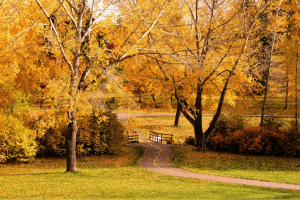Your New Self-Care Ally: The Healing Power of Your House Plants
Now that many of us are looking at another season or two indoors…
We’re shifting our focus to our live/work/school/all-of-life space. If you’re like many of us, you’ve moved beyond fix-it projects from your wish list and are now engaged in radical “nesting.”
The newfound realizations of what we’re up against right now in the world, are also giving way to a need for radical self-care.
This means a new approach to your diet, sleep, meditation, and moving your body. Everything you do is part of a care plan that is intentional and designed to support you for the long haul. This is the new marathon.
And because of the pandemic, this also means your home is now a multi-use space — and it is as integral to your mental, emotional, physical, and spiritual health as any other aspect in your routine.
Your greatest ally in supporting you in your space is your houseplant. It sounds too simple to be true; however, plants help you in more ways than you can imagine… of course if you are already a plant parent, you know this.
The practice of using plants for healing purposes is as old as medicine itself. Ancient cultures respected nature’s capability to improve health and mood, and did not hesitate to use herbal remedies to heal sicknesses from headaches to heartache. Despite modern culture losing that day-to-day connection to the outdoors, western medicine continues to rely on centuries-old knowledge of natural cures and the healing power of plants. In fact, many of the medications currently prescribed were originally made from plants. You might pop an aspirin from a jar, but early incarnations of the pain reliever made from willow bark were used in ancient Greek and Egyptian cultures, by Lewis and Clark during their famed expedition, and by thousands of people in between.
Though you likely get medicine in pill form, you are probably still utilizing plants to help heal your aches and pains, and that is only the tip of the aloe leaf, so to speak. There are many ways plants can support you in feeling and working better physically, emotionally, and spiritually. If you incorporate plant therapies into your arsenal of natural remedies, you can access Mother Earth’s amazing and nearly limitless medicine cabinet and all its healing magic.
The quickest and easiest way to accelerate any type of healing is to get a houseplant. Or better yet, several houseplants. Taking care of a living thing boosts our sense of self-worth and increases contentment, and as you watch your foliage grow and blossom—quite literally if you buy a flowering plant—you develop a deeper connection to nature which begins to heal your mind, body, and spirit almost instantly. As an added bonus, plants’ rich colors and textures will beautify any room, especially if potted in a pretty container.
Houseplants can have tremendous effects on your productivity, concentration, and mood, too. Not only does looking at something beautiful make you happier, studies have shown that people with houseplants feel more relaxed and have lower stress levels. Nature’s calming effect helps increase concentration, and workers in office spaces that contain plants and flowers demonstrate more focus and creativity, superior accuracy, and higher quality output, and so can you!
Plants also clean pollutants from the air, acting as natural, noise-free air filters, neutralize harmful EMFs, and generate oxygen in the process. Since our breath is so important to our quality of life—when we breathe better, we feel better—reducing the toxins in your home, and especially where you sleep, is vital to your health. A plant in your bedroom will enhance your slumber, especially if it is sweet-smelling lavender, a scent that aids relaxation and promotes deeper sleep. Peace lilies, ivy, and spider plants have all been shown to be especially effective in filtering the air, but really, any greenery will improve your space and your health.
Many healing properties in plants are easy to ingest in herbal teas. Maybe you already drink chamomile tea before bed as a relaxing nightcap, but this herbal remedy also aids digestion. Chamomile is an antimicrobial agent, too, meaning it can help eliminate bacteria and infections, and it eases inflammation and loosens tense muscles. Talk about a powerful plant! Ginseng can raise energy levels, naturally and without the side effects of caffeine, and ginkgo has been shown to improve circulation and brain function, and may even assist in maintaining optimal mental health as you age.
In my healing courses and workshops I often get asked for cures to the common cold. Echinacea is a great herb to take during cold and flu season because it’s an immune booster. It won’t cure your cold, but it will strengthen your body’s defenses so it can better fight off the illness. Taking elderberry syrup as a tonic can help shorten the length of your cold, as can fresh lemon and orange juice, all of which taste delicious. Try one of my favorite plant-based therapies for colds or sinus congestion caused by allergies: put three or four drops of eucalyptus oil in hot water and inhale until your nasal passages start to clear.
If you suffer from depression or anxiety, you might want to check out St. John’s Wort. It is a commonly used herbal alternative to prescription antidepressants and anti-anxiety drugs. Many people have found it quite effective in lifting their mood naturally. Of course, as a spiritual teacher and energy healer, I also highly recommend meditation and journaling to deal with feelings of sadness or fear. Daily meditation brings calm and peace to the mind and body, reduces stress, and helps you access Source, and journaling allows your truth to flow freely onto the page, getting it out of your body and mind, and releasing any pent-up negative energy in your personal energy field.
Plants do so much more than I can cover here, but the most overlooked healing plants are those you eat! Don’t forget that what you consume contributes to your well-being. Be sure to eat lots of dark leafy greens and a variety of fruits and veggies to keep your body in good shape so you can heal yourself from the inside out.
Whether you get a decorative houseplant or start drinking herbal tea, once you experience the potent healing energy of plants, you’ll be rummaging through Mother Nature’s medicine cabinet for your next cure.















































